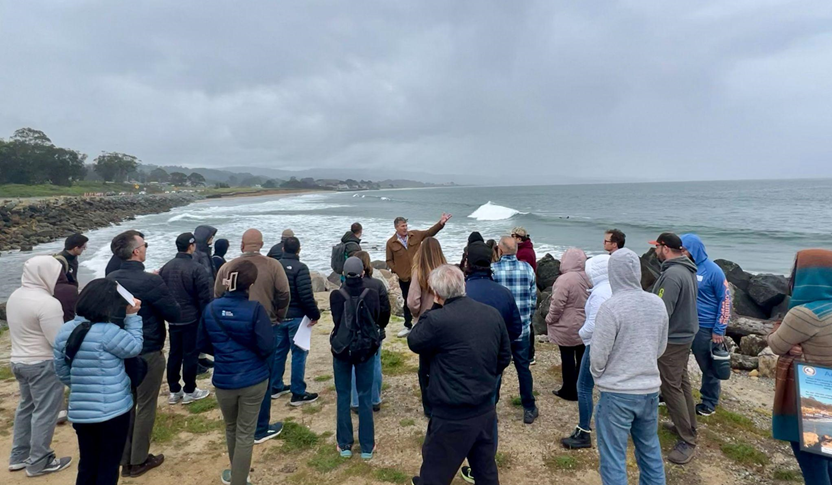Last month, California Department of Transportation (Caltrans) engineers, coastal managers, researchers, and state officials met in Half Moon Bay, California, to discuss opportunities to leverage natural infrastructure to protect coastal roads from flooding.
The NOAA-supported workshop was the second in a series led by Caltrans and co-hosted by the Greater Farallones National Marine Sanctuary, the Greater Farallones Association, Point Blue Conservation Science, and the California Coastal Commission. Participants explored challenges and opportunities in permitting, planning, and post-project monitoring, while also discussing long-term strategies for using natural infrastructure to address local restoration needs.
With few opportunities for meaningful cross-sector dialogue on natural systems, the workshop’s breakout sessions were a highlight of the event, fostering discussions about the design, scope, costs, and benefits of using natural infrastructure. One of the workshop’s key moments was a field visit to Surfer’s Beach, a case study for nature-based solutions to address significant erosion and beach access issues. The multi-institutional project is funded through the National Centers for Coastal Ocean Science (NCCOS) Effects of Sea Level Rise (ESLR) Program and guided through collaboration with the Federal Highway Administration.

The workshop and case study are authorized by the NOAA Authorization Act of 1992, Pub. L. 102-567 (Oct. 29, 1992); sec. 201(c), which directs appropriation for the NCCOS Competitive Research Program to augment and integrate existing NOAA programs, with a specific focus on improving predictions of coastal hazards and protecting human life and property.
